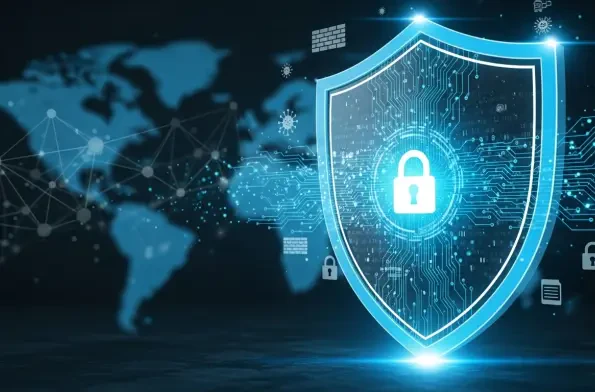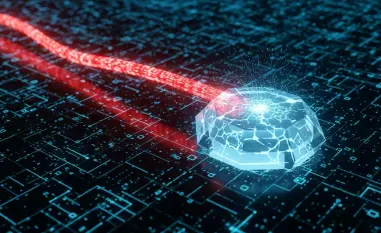In the rapidly shifting realm of cybersecurity, Chief Information Security Officers (CISOs) stand at a pivotal juncture where their roles have expanded far beyond traditional boundaries, thrusting them into a spotlight of unprecedented personal and professional risks. Once focused solely on protecting digital infrastructures, these executives now juggle compliance, risk management, and oversight of cutting-edge technologies like artificial intelligence, all while facing the looming threat of legal accountability and targeted cyberattacks. High-profile legal cases have intensified scrutiny, revealing a harsh truth: CISOs can be held personally liable for organizational failures, even when they lack sufficient control over resources or decisions. This evolving landscape raises critical questions about whether these leaders can bear such immense burdens alone, as the stakes—both personal and corporate—continue to escalate in an era of relentless cyber threats and regulatory pressures.
Legal Pressures Reshaping the CISO Role
The legal arena has become a formidable battleground for CISOs, with recent cases casting a long shadow over their professional lives. The 2023 conviction of former Uber CISO Joseph Sullivan for concealing a data breach, alongside SEC charges against SolarWinds’ CISO for fraud and control lapses, has reverberated through the cybersecurity community. These incidents demonstrate that personal liability—potentially involving criminal or civil penalties—is no longer a distant concern but a tangible risk. A Fastly survey indicates that 93% of companies have adjusted policies to address such liability fears, yet many measures seem to prioritize legal safeguards over substantive security improvements. This disconnect leaves CISOs in a precarious position, navigating a landscape where accountability often outstrips authority, and the consequences of organizational missteps can directly impact their personal futures.
While some legal tensions appear to be easing, the broader implications remain troubling for CISOs. The partial dismissal of the SEC’s case against SolarWinds in 2024 offers a glimmer of relief, suggesting that not all liability claims will stick. However, as Marshall Erwin, CISO at Fastly, cautions, a reduction in immediate legal pressure does not necessarily translate into meaningful progress. If companies interpret this as a reason to relax rather than reinforce cybersecurity programs, the root issues persist. CISOs remain caught in a bind, balancing the need to protect their organizations with the ever-present risk of personal repercussions, while corporate responses often lean toward superficial fixes like liability insurance rather than addressing systemic vulnerabilities that could prevent crises in the first place.
Personal Safety Under Siege
Beyond courtroom battles, CISOs face direct threats to their personal safety as their prominence makes them prime targets for cybercriminals. Sophisticated tactics, such as deepfake technology and personalized phishing campaigns, often exploit publicly available data scraped from social media platforms. Caleb Sima, former Chief Security Officer at Robinhood, recounts the lengths he went to in order to secure his family’s online presence, a necessity heightened by his wife’s visibility as a public figure. This blending of professional and personal risk underscores a chilling reality: CISOs must now defend not only their organizations but also themselves and their loved ones from attackers who leverage personal information as a weapon in their arsenal.
The personal toll of such threats cannot be understated, as they add an additional layer of stress to an already demanding role. Cybercriminals increasingly use open-source intelligence to craft highly targeted attacks, tailoring their approaches to exploit individual vulnerabilities. For CISOs, this means constant vigilance over their digital footprints, a task that extends beyond office hours and into their private lives. The psychological burden of knowing that a single misstep—whether a leaked personal detail or a successful phishing attempt—could have devastating consequences is immense. As these threats grow in sophistication, the need for personalized risk assessments becomes critical, pushing CISOs to adopt proactive measures to safeguard their personal security alongside their professional duties.
Organizational Barriers to Success
Within corporate structures, CISOs often encounter significant hurdles that undermine their ability to perform effectively. Despite their expanding responsibilities, which now encompass everything from regulatory compliance to AI integration, many lack the necessary budget or authority to implement robust security measures. This mismatch creates a frustrating dynamic where expectations soar while support lags behind. Chuck Norton, a former CISO, highlights that without a company culture that genuinely prioritizes cybersecurity, even the most advanced tools become ineffective. His intention to be more selective about future roles reflects a growing sentiment among CISOs to align with organizations that demonstrate real commitment rather than offering mere rhetoric.
The lack of organizational backing often leaves CISOs stretched thin, grappling with an ever-widening scope of duties under constrained conditions. Budgetary limitations mean that critical initiatives may be delayed or scaled back, even as cyber threats grow more complex. Furthermore, when security is not embedded as a core value across all levels of an organization, CISOs face resistance to necessary changes, hampering their efforts to build resilient defenses. This systemic shortfall not only jeopardizes cybersecurity outcomes but also amplifies the personal risks CISOs face, as they remain accountable for failures that stem from decisions beyond their control. Addressing these organizational gaps is essential to empowering CISOs to navigate their multifaceted roles without bearing the brunt of systemic inadequacies.
The Power of Transparent Communication
Amid these mounting challenges, effective communication emerges as a vital lifeline for CISOs striving to shift corporate focus toward genuine security enhancements. Marshall Erwin emphasizes the importance of clearly articulating risks and resource requirements to executives and board members, aiming to reframe cybersecurity as a collective priority rather than a singular burden. This approach seeks to dismantle the tendency to focus on liability avoidance, instead fostering an environment where strategic investments in security are seen as indispensable. By bridging the gap between technical needs and business objectives, CISOs can cultivate understanding and support at the highest levels, paving the way for more robust defenses.
Transparent dialogue also serves as a mechanism to align organizational goals with cybersecurity imperatives, reducing the isolation CISOs often experience. When risks are communicated in terms that resonate with business leaders—highlighting potential financial or reputational impacts—there’s a greater likelihood of securing the necessary buy-in for critical initiatives. This shift in perspective can transform cybersecurity from a perceived cost center into a strategic asset, encouraging proactive measures over reactive fixes. For CISOs, mastering this skill is not just about mitigating personal risk; it’s about driving a fundamental change in how organizations perceive and prioritize their security posture, ensuring that the responsibility is shared rather than shouldered alone.
Building a Culture of Security
Ultimately, the success of CISOs may hinge on fostering a cultural shift within organizations that places cybersecurity at the forefront of priorities. Norton’s insight that a supportive environment outweighs even the best technical controls points to a deeper truth: without executive commitment and a unified approach, CISOs are set up for struggle. A culture that values security ensures that policies, resources, and attitudes align to support the CISO’s mission, creating a collaborative framework where risks are managed collectively. As cyber threats evolve and responsibilities expand, this cultural alignment becomes not just beneficial but essential for sustaining effective defenses.
The journey toward such a culture requires persistent effort to embed security awareness across all departments, from entry-level staff to top leadership. When every employee understands their role in safeguarding the organization, the burden on CISOs lightens, allowing them to focus on strategic oversight rather than constant firefighting. Companies must recognize that supporting their CISOs goes beyond legal protections or budget allocations; it involves cultivating an ethos where security is everyone’s concern. Only through this comprehensive approach can organizations hope to navigate the complex threat landscape, ensuring that CISOs are empowered to lead without the constant weight of disproportionate accountability.













